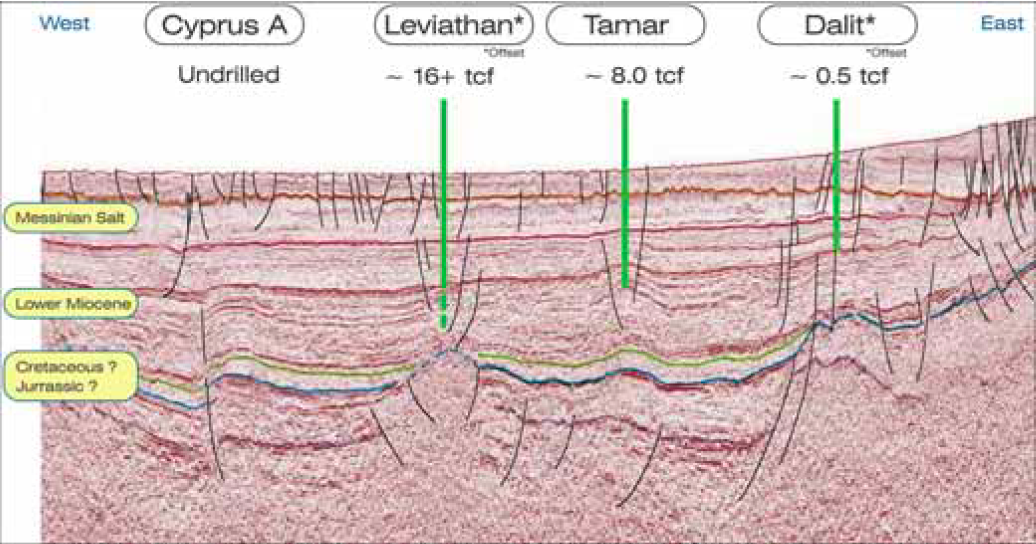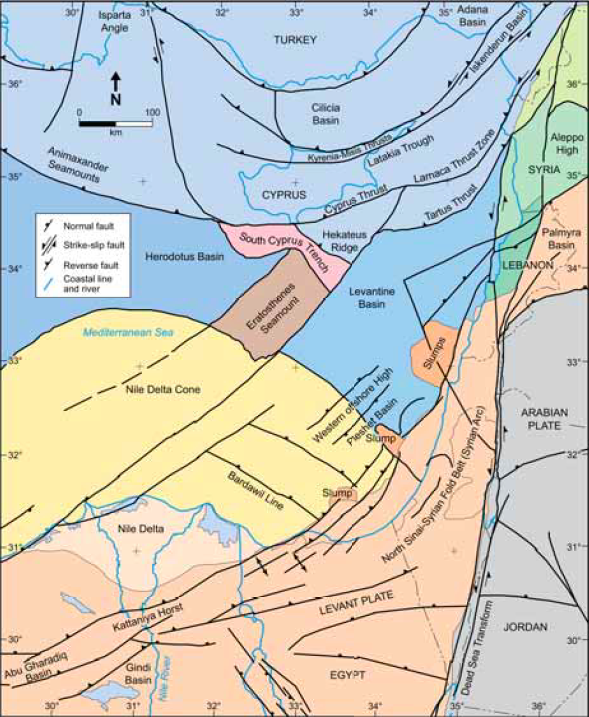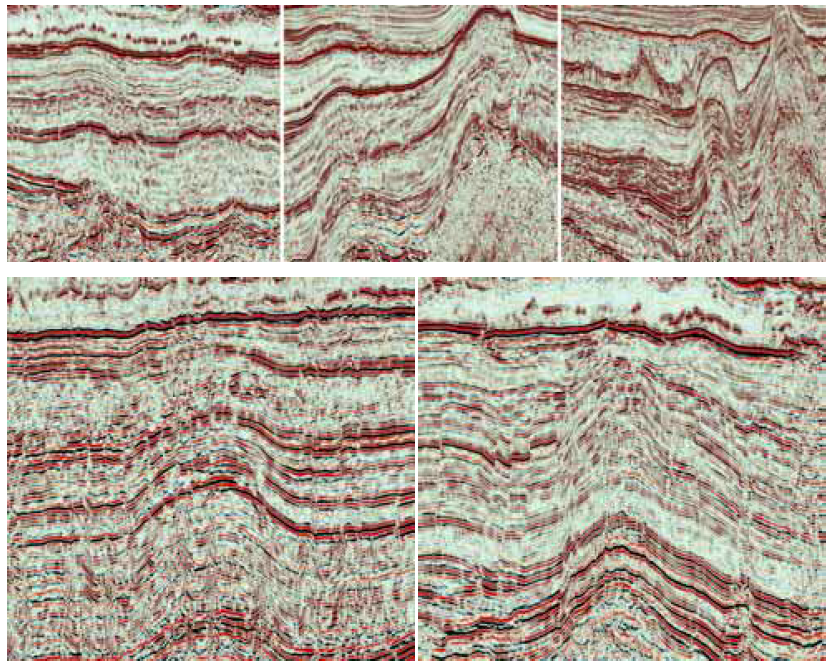Looking offshore
The Eastern Mediterranean has been one of the largest commercial and trading hubs of the entire EAME region for many centuries. More recently, during the last 20 years, the south-east of the region has also become successful for oil and gas exploration, particularly offshore in the Nile Delta Cone and to a lesser extent in South East Turkey around Iskenderun Basin. However the extensive area in between was almost entirely overlooked until the BG Group extended their successful Nile Delta exploration campaign into the southern Levantine Basin, where they discovered a number of biogenic Pliocene gas fields. These discoveries amounted to a modest volume of gas, some of which have now been in production for several years.

The large central and generally underexplored region comprises the Levantine Basin, the Larnaca-Latakia thrust belt to the north and the Erastothenes Seamount and Herodutus Basin to the West. The southern part of the Levantine Basin has recently become the focus of a very successful drilling campaign by the Noble-Delek group who have discovered three new large gas fields at Dalit, Tamar and Leviathan (the latter still drilling deeper at time of press). These three new finds have estimated reserves in excess of 25 Tcf (700 Bcm), making them both the largest discoveries in the region and the largest in Noble’s portfolio.
These recent world class gas discoveries are located in Lower Miocene – Oligocene sands with reservoir thicknesses in Tamar ranging from 33m to 140m, with stacked reservoir potential. Press articles state the sands are of high quality with excellent porosity and permeability characteristics and high flow rates when tested. Water depths vary from 1,000m to over 1,645m at the Leviathan location, which is 128 km from the coast. Leviathan is the largest of the recent discoveries with an aerial extent of approximately 325 km2.
Spectrum and EastMedCo have been evaluating the greater East Mediterranean region jointly for the last 10 years. The project commenced with an evaluation of a 1975 Sefel and Associates regional seismic survey (known as the EMED-75 survey) reprocessed by Spectrum in 1999 to create a wide regional framework. Spectrum & EastMedCo evaluated the reprocessed data, and in 2000 Spectrum acquired a further 12,300 kms of new 2D regional data over this framework (EMED-00). This dataset has been very successful and was further augmented in 2002 by the acquisition of an inshore infill survey off the Lebanese coast to provide links to the Eastern edge of the basin (LEB-02). The EMED-00 dataset was depth migrated in 2007 to provide enhanced imaging of the deeper data and to better understand the evolution of the basin and hydrocarbons systems within it.
EastMedCo made a full interpretation and evaluation of the data and not only identified the structures containing the recent discoveries many years before they were drilled, but also catalogued a significant number of leads and prospects throughout the whole East Mediterranean region where many similar structures are present. (See Roberts & Peace GeoArabia 2007 for fuller descriptions of the many other play styles present.)
Oil potential as well?
The recent discoveries have all contained gas, but there is good evidence to suggest that there also exists significant oil potential in the Levantine basin.
In the adjacent Nile Delta, many of the early successes consisted of discoveries of post-Messinian biogenic gas. However, as companies have drilled deeper, into the pre-salt section, the hydrocarbons discovered have included both thermogenic gas and, more recently, thermogenic oil. There are also two older wells that tested shallower Jurassic plays on the Southern Levantine basin margins and found approximately 800 bopd light Jurassic oil when tested. As these wells are located on the edge of the basin it seems reasonable to anticipate that the source kitchens are located to the west, in the central part of the Levantine Basin. The oil has migrated from the kitchen to the basin margins to the east, west and north.

EastMedCo has evaluated the hydrocarbon oil potential through seepage studies. Numerous oil seeps have been found in the greater East Mediterranean region from Southern Turkey to the Nile Delta indicating a potential widespread oil source. Many of these can be correlated with clear migration pathways on seismic data. (Johnson and Peace APPG Denver 2002).
The current Leviathan well is targeted to investigate this deeper oil potential, with recent press announcements stating the well has discovered a minimum of 67m of gas bearing reservoirs of the same Lower Miocene sands as Tamar and Dalit. It is reported the well is now continuing to a target depth of around 7,200m to test the remaining Tertiary section and possibly the Cretaceous and Jurassic.
New licence rounds
The new gas discoveries are all located in deep water in the southern Levantine Basin, having obvious implications for future exploration offshore Cyprus, Lebanon, Syria and Turkey. First licence rounds have already been held in offshore Cyprus and Syria over the last few years, but took place before the recent discoveries and only attracted limited interest. Only one award was made offshore Cyprus (to Noble with the Cyprus A block) and no awards at all were made offshore Syria.
The recent discoveries have sparked renewed interest, and bid rounds are planned for both offshore Cyprus and Syria in 2011. In addition, Lebanon has recently announced the approval of its new energy law and new border agreements with neighbouring countries, which will facilitate the first ever licence round to take place in Lebanon in the near future.
To assist with these rounds, Spectrum Multi Client library includes approximately 22,500 line kilometres of seismic data in the Eastern Mediterranean with a record length of 12 seconds twt. The EMED-00 original PSTM (pre-stack time migration) dataset proved the presence of the deeper part of the Levantine basin. Further imaging improvements were achieved with PSDM (pre-stack depth migration) reprocessing especially where structuring is more complex. Spectrum is currently reprocessing the EMED-00 survey through PSTM to produce a fully AVO compliant dataset. For companies interested in exploring the areas further or joining a pre licence evaluation group please contact davepeace@eastmedco.com
Underexplored Levantine Basin
The huge underexplored area of the Eastern Mediterranean has all the elements of a significant hydrocarbon province in the EAME region. Good seismic datasets are available, leads and prospects have been identified and new licence rounds are imminent.

Acknowledgements: Thanks to Richard Spoors, Gary Scaife and Debbie Sewell of Spectrum GEO for their assistance with this article.




